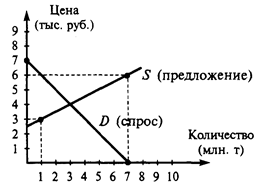UNIT EIGHT
Task 1. Listen to the recorded words and word combinations. Write them in transcription. Practise their pronunciation. Hors dóeuvre zander in aspic mayonnaise gourmet fastidious nourishing whipped cream broth cocoa biscuits ginger parsnip artichoke asparagus cauliflower spinach broccoli aubergines turkey venison trout flavoured barbecue caviar scalloped fish crucian carp prunes salmon sardine oyster spaghetti prawn shrimp stewed cuisine bay leaves herbs parsley almond cinnamon grind knead impromptu fabulous marvellous diet sausage porridge raisins squeeze skewer braise sauté recipe ingredient vermicelli ravioli poultry Task 2. Listen to the words (Task 1). Put them in the right column:
Task 3. Match pairs of words that rhyme: Fish – dish Peaches – beaches Carp – harp Dill – bill Spice – rice Mustard – custard Dip – snip Food – mood Sage – cage Corn – born Brussels – muscles Beer – dear Honey – money egg – beg Cake – bake Tin – bin Packet – racket Pack – back Roll – bowl Leek – seak Peas – keys Pumpkin – bumpkin Milk – silk Cherry – berry Marrow – sparrow Eel – meal Sauce – course Crumpy – dumpy Jug – mug Pike – bike Jar – bar Cod – knod Jelly – belly Bread – red Glass – grass Spoon – moon Crush – brush Oil – boil Frying – drying Task 4. Look through the words in Task 3; group them according to the type of a vowel in a stressed syllable. Task 5. Listen carefully to the following conversational situations. Write them down. Concentrate on the intonation of replies. Mark the type of the nuclear tone they take. Define the attitude rendered in the replies. Listen to them again, pronounce them, make them sound non-final, non-categoric(al), soothing, sympathetically interested, reassuring, encouraging, calmly patronizing, friendly, puzzled. a) - Tell me, doctor, is he badly hurt? - Nothing at all /serious. Just a few /bruises. (soothing, reassuring) b) - I don’t think I’ll ever do it. - You /will. It’s just a matter of /practice. (reassuring) c) - I’m going to do some shopping. - Can I come /too? (interested) d) - I’m afraid they’ve gone out. - How soon will they be back? (sympathetically interested) e) - I really must be off. - Don’t let me detain you then. (calmly patronizing) f) - I’m just going. - Have a good time. (encouraging) g) - Alice is on the phone. - Who does she want to speak to? (interested, puzzled) h) - Are you quite well prepared for your exam? - Not quite. (noncategoric) i) - Shall we write a dictation tomorrow? - I believe so. (noncategoric) j) - I’m sorry but I can’t go to the cinema with you. - Are you very busy today? (interested). Task 6. Listen to the following dialogues and exercises. Write down the sentences containing tag-questions (disjunctive questions), lay stresses and tone marks, give their tonograms. Establish the intonation patterns of expressing certainty/uncertainty. Define the speakers’ social status (equal, superiour, inferiour) and the degree of formality (formal, informal) of the conversations. Do it in writing. Practise reading the dialogues. Thompson P. 79-86 (Ex.82-89) 1) Harriet: It’s cold today, isn’t it? David: Well, remember it’s November. Harriet: Yes, but last November wasn’t cold, was it? David: Well, last November was exceptionally warm, so they say. Harriet: We didn’t wear overcoats, did we? David: Not in the first week, certainly. Harriet: Oh, yes, it got cooler later, didn’t it? David: Quite a bit cooler – but not this cold. Harriet: There’s been snow, hasn’t there? [Thompson:79] 2) Mr W.: It’s the 14th today, isn’t it?. Miss R.: That’s it. Mr W.: I haven’t opened my letters yet, have I? Miss R.: Not yet, Mr Watkins, no. Mr W.: You said it was March, didn’t you? Miss R.: No, Mr Watkins. It’s February. [Thompson:82] Task 7. Read the text given below. Make sure you understand what it is about. Divide each sentence into syntagms, lay stresses and tone marks, practise your reading technique. Record your reading. Phonetics, to people who know very little about it, usually means a lot of funny characters which make ordinary English words look most strange and barbarous. Although this is not a correct description of phonetics, it is true that in writing about speech sounds we often find it useful to refer to them by means of a phonetic alphabet. No student of English can fail to notice that English spelling is not always a reliable guide to pronunciation. If we compare the words cough, enough, bough, though, through, and ought, we see that the same spelling ough is used to represent widely varying sounds; on the other hand, in the words seed, beam, field, key, and these, we see different spellings all representing the same sound. Therefore, a special alphabet is used in which each letter or symbol stands for one and only one sound wherever it occurs. A word written in phonetic symbols can be read aloud correctly by anyone familiar with phonetics and phonetic transcription.
|




